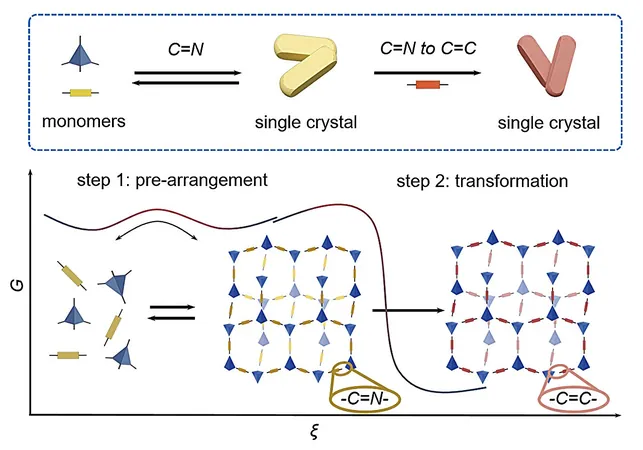
Revolutionary Breakthrough: Scientists Create Single-Crystal sp² Carbon-Linked Covalent Organic Frameworks!
2025-01-06
Author: Noah
Introduction
In a groundbreaking development, Chinese scientists have introduced a novel method for synthesizing single-crystal sp² carbon-linked covalent organic frameworks (sp²c-COFs), harnessing the power of a transformative imine-to-olefin strategy. This innovative approach promises to redefine the landscape of organic materials and their applications.
What are Covalent Organic Frameworks?
Covalent organic frameworks (COFs) are crystalline, porous polymers built from organic molecules linked by strong covalent bonds and are known for their versatile applications. From gas storage and separation to sensing technologies, drug delivery, organic electronics, and photonics, the potential of COFs is immense. However, the newly developed sp²c-COFs stand out as a special category that wires in sp² carbons, which have sparked significant interest due to their promising roles in organic semiconductors.
Characteristics of sp²c-COFs
One of the defining features of sp²c-COFs is their robust C=C bonds, which confer improved electronic conductivity, superior optical activity, and enhanced magnetic properties compared to traditional C=N linked COFs. These enhanced characteristics are crucial for advancing electronic materials and improving device performance.
Challenges in Synthesis
Despite their potential, the synthesis of highly ordered single-crystal sp²c-COFs has faced obstacles due to the inherent low reversibility of olefin bonds. This limitation previously resulted in the formation of polycrystalline or amorphous materials rather than the desirable single crystals.
The Breakthrough Study
In a pioneering study published in *Nature Chemistry*, Professor Zhang Tao and his team from the Ningbo Institute of Materials Technology and Engineering (NIMTE), in collaboration with Professor Zhang Zhenjie from Nankai University, successfully overcame these barriers. They achieved the synthesis of single-crystal sp²c-COFs via their novel imine-to-olefin transformation, marking a significant leap forward in material science.
Characterization Techniques
The research team employed advanced techniques such as high-resolution transmission electron microscopy (HR-TEM) and continuous rotation electron diffraction (cRED) to meticulously characterize the structure of the newly created single crystals. Their findings indicate that the efficient imine-to-olefin linkage transformation greatly enhances π-conjugation within sp²c-COFs, allowing for extensive electronic delocalization.
Notable Findings
Remarkably, compared to their C=N linked counterparts, the newly synthesized single-crystal sp²c-COFs displayed a notable increase in electron spin, yielding an impressive room-temperature, metal-free ferromagnetism measurement of 8.6 × 10⁻³ emu g⁻¹.
Future Implications
Excitingly, two high-quality variants of these single-crystal sp²c-COFs have been successfully developed, underscoring the versatility and potential scalability of this synthesis method. This breakthrough not only tackles the long-standing challenge of creating single-crystal COFs but also opens up new avenues for the future development of organic semiconductors and their revolutionary applications in electronics, energy storage, and beyond.
Conclusion
As the field of materials science continues to evolve, the implications of this research could lead to significant advancements in technology that reshape how we approach organic materials in various industries. Stay tuned as these scientists continue to push the boundaries of what's possible!



 Brasil (PT)
Brasil (PT)
 Canada (EN)
Canada (EN)
 Chile (ES)
Chile (ES)
 Česko (CS)
Česko (CS)
 대한민국 (KO)
대한민국 (KO)
 España (ES)
España (ES)
 France (FR)
France (FR)
 Hong Kong (EN)
Hong Kong (EN)
 Italia (IT)
Italia (IT)
 日本 (JA)
日本 (JA)
 Magyarország (HU)
Magyarország (HU)
 Norge (NO)
Norge (NO)
 Polska (PL)
Polska (PL)
 Schweiz (DE)
Schweiz (DE)
 Singapore (EN)
Singapore (EN)
 Sverige (SV)
Sverige (SV)
 Suomi (FI)
Suomi (FI)
 Türkiye (TR)
Türkiye (TR)
 الإمارات العربية المتحدة (AR)
الإمارات العربية المتحدة (AR)